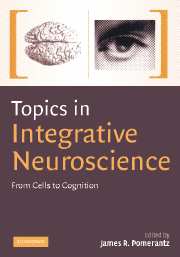Book contents
- Frontmatter
- Contents
- List of contributors
- Preface
- Overview of neuroscience, choice and responsibility
- 1 Neuroscience, choice and responsibility
- PART I HIGHER ORDER PERCEPTION
- PART II LANGUAGE
- PART III MEMORY SYSTEMS
- Introduction to Memory Section
- 9 Memory systems
- 10 A brain system for declarative memory
- 11 The role of the lateral nucleus of the amygdala in auditory fear conditioning
- 12 On crucial roles of hippocampal NMDA receptors in acquisition and recall of associative memory
- PART IV SENSORY PROCESSES
- Index
- Plate section
- References
12 - On crucial roles of hippocampal NMDA receptors in acquisition and recall of associative memory
Published online by Cambridge University Press: 08 August 2009
- Frontmatter
- Contents
- List of contributors
- Preface
- Overview of neuroscience, choice and responsibility
- 1 Neuroscience, choice and responsibility
- PART I HIGHER ORDER PERCEPTION
- PART II LANGUAGE
- PART III MEMORY SYSTEMS
- Introduction to Memory Section
- 9 Memory systems
- 10 A brain system for declarative memory
- 11 The role of the lateral nucleus of the amygdala in auditory fear conditioning
- 12 On crucial roles of hippocampal NMDA receptors in acquisition and recall of associative memory
- PART IV SENSORY PROCESSES
- Index
- Plate section
- References
Summary
Introduction
A full understanding of the mammalian brain mechanisms underlying a higher cognitive phenomenon like learning and memory requires identification of relevant events or processes occurring at multiple levels of complexity; from molecular, synaptic, and cellular levels to neuronal ensemble and brain systems levels. This is an enormous challenge for brain researchers because cognitive phenomena can be monitored only at the level of a live animal's behavior, while many of the analytical methods for the underlying mechanisms are carried out using in vitro preparations and effective in vivo methods are limited. How can we be sure that the events or processes identified by in vitro methods or by even some in vivo studies are causally related to the animals' behavioral phenotype? For simpler invertebrate systems, molecular genetics has been effective for this purpose. Organisms harboring a mutation in a specific gene can be subjected to a variety of in vitro and in vivo analyses including behavioral tests, and deficits or impairments detected at different levels of complexity can potentially be bound together using the mutation as a connecting thread.
Background
Experimental strategy
For the analysis of more complex mammalian systems, however, additional tricks are necessary. One significant trick would be to restrict the mutation spatially and temporally. For instance, if one can restrict deletion (i.e., null mutation) of a specific gene to a particular type of neuron present in a particular area of the brain and only to a late phase of the animal's life, one can expect that the resulting deficits or impairments would be much more specific.
- Type
- Chapter
- Information
- Topics in Integrative NeuroscienceFrom Cells to Cognition, pp. 326 - 356Publisher: Cambridge University PressPrint publication year: 2008



